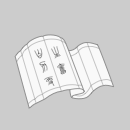
材料科学和材料工程9787506259385
正版图书,可开发票,请放心购买。
¥ 22.98 6.0折 ¥ 38 全新
仅1件
广东广州
认证卖家担保交易快速发货售后保障
作者[英]Don W.Pashley
出版社世界图书出版有限公司
ISBN9787506259385
出版时间2002-06
装帧平装
开本32开
定价38元
货号2245822
上书时间2024-12-19
- 最新上架
商品详情
- 品相描述:全新
- 商品描述
-
目录
PrefaceProfessor B.J.BriscoeSlippery Customers; Sticky Problems1.Interface Engineering——The Scope1.1.Adhesion1.2 Friction1.3.Lubrication1.4.Damage1.5.Wear2.Historical Contexts3.Principles of Interpretation3.1.The adhesion model of friction3.2.The deformation models3.3.Other processes4.Tribological Interfaces; Some Examples5.Interfaces in Assemblies6.Solid Processing and Production Engineering; Frictional Walls7.Final Reflection8.Challenges for the Future9.Personal RemarksAcknowledgementsReferencesProfessor A.J.KinlochSticking up for Adhesives1.Introduction2.Interfacial Contact and Intrinsic Adhesion2.1.Introduction2.2.Mechanisms of intrinsic adhesion2.3.The bonding of fibre-cor0posite materials2.4.The use of organometallic primers3.Hardening the Adhesive3.1.Introduction3.2.Chemical aspects3.3.Multiphase adhesives4.Predicting the Strength and Service Life of Adhesive Joints4.1.Introduction4.2.The fatigue behaviour of adhesive joints5.ConclusionsAcknowledgementsBibliographyProfessor D.B.HoltMagical Materials for Motionless Machines1.Introduction1.1.Half the story of materials1.2.The other half of the materials story2.Grain Boundary Electroluminescence in GaP3.Scanning Electron Microscope Electron Beam InducedCurrent (EBIC) and Cathodoluminescence (CL)3.1.Monte Carlo electron trajectory simulations3.2.Applications of scanning electron microscopy to optoelectronic devices4.Scanning Electron Microscope Characterisation of Quantum Confined Structures5.Magical Materials for Motionless MachinesAcknowledgementsReferencesProfessor Alan AtkinsonInterfaces in Materials- If You Cant Beat Them,Join Them1.Introduction2.Grain Boundaries- Historical Development2.1.Early metallography2.2.The twentieth century3.Oxide Grain Boundaries and High TemperatureCorrosion of Metals4.Interfaces between Two Different Solids4.1.Oxide layers on metals4.2.Interfaces in composites4.3.Epitaxial interfaces between semiconductors5.Interfaces between Solids and Liquids5.1.Processing ceramics5.2.High strength cements5.Future Opportunities and Concluding RemarksAcknowledgementsReferencesProfessor Rees D.RawlingsBrittleness- A Tough Problem1.Introduction2.Deformation of Metals3.Ceramic Components and Fibres4.Composites5.Ceramic Matrix Composites6.Metal Matrix Composites and Functionally Graded Materials7.Listening to CracksAcknowledgementsReferencesContentsProfessor Larry L.HenchThe Story of Bioglass: From Concept to Clinic1.The Beginning2.The Problem3.The Concept: Bioactive Bonding4.Bioactive Glasses5.Four Paths of Development6.Bioactive Composites7.Molecular Tailoring of Surface Chemistry8.ConclusionsAcknowledgementsReferencesIndex
内容摘要
Finally,wear iS a process which most of US would be familiar with where, through the action of sliding forces and the subsequent damage,mechanical erosion or chemical degradation of the solid bodies occurs.It iS a frustrating and an expensive process and many of US spend a significant amount of our income and resources repairing the consequences of such damage.For my own part,the most significant damage will be the replacement of my clothes, my shoes,my automobile engines or my automobile tyres.We can think of other examples.
So.the remit within the interface engineering context has many leveis of requirement.At simple level,it might be to.optimise the processing of a solid or the rheology of a paint suspension.15 At a more diverse level.it could be to optimise the behaviour of a fabric conditioner or a hair conditioner or at a later stage perhaps wondering about our ability to minimise the wear and improve the friction of,say.automobile tyres.18 The remainder of the paper will be divided into four or five general parts in order to exemplify the progression of my own interest in what I believe has been the way that this subject has developed in the last 30 years.The following section will deal with what I consider to be the very interesting historical context.The next section will describe some of the rudiments of the principles available for interpreting interface engineering problems.Two major sections will foliow these.the first one being some examples of the 1 tribology heritage in a classical sense of interfaces to cover such things as transport,cosmetics,ballistics.This iS complemented by another section which deals with some facets of the inteffaces within assemblies and the consequences upon the rheological response or processing behaviour of these materials.The finaI maior section will deal with the topic of frictional walls and the consequence of interfaces in some aspects of the processing of fsolids,in the main starches and ceramic pastes.Finally.
……
精彩内容
Newly appointed or newly promoted professors at Imperial College are required to give an inaugural lecture on a subject of their choosing. The professors inevitably talk about areas of their subject on which they are expert, but the lectures are presented in such a way that they appeal to a wide ranging audience, from those who have little knowledge of the subject to those who are comparatively expert in the field. These written versions of six such lectures are aimed at readers who have some knowledge of, and interest in, materials science and engineering. They should also be of interest to those who are well versed in the subject. ...
— 没有更多了 —












以下为对购买帮助不大的评价